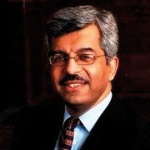Arts and Humanities Research Council
Science in Culture Innovation Awards
- Award winner: Charlotte Sleigh
- Institution: University of Kent
- Value: £63,932
Metamorphoses: gaming art and science with Ovid
- Award winner: Rebecca Ellis
- Institution: Lancaster University
- Value: £63,481
Dark matters: an interrogation of thresholds of (im)perceptibility through theoretical cosmology, fine art and anthropology of science
Royal Society
University Research Fellowships
- Award winner: Jens Chluba
- Institution: University of Cambridge
- Value: £406,979
CMB spectral distortions as a new probe of early Universe physics
- Award winner: Jie Song
- Institution: Imperial College London
- Value: £469,866
Reprogramming of epigenetic memory during plant regeneration
- Award winner: Jacqueline Rosette
- Institution: Swansea University
- Value: £429,914
Inventory of the vegetated land surface using remote sensing technologies
Leverhulme Trust
International Network Grants
Sciences
- Award winner: Mark Williams
- Institution: University of Leicester
- Value: £124,846
Assembling the early Palaeozoic terranes of Japan
Humanities
- Award winner: Stephen Church
- Institution: University of East Anglia
- Value: £86,044
New interpretations on the Angevin world
- Award winner: Hugh Kennedy
- Institution: Soas, University of London
- Value: £110,177
Economic integration and social change in the Islamic world system, 800-1000 CE
- Award winner: Nathaniel Coleman
- Institution: Newcastle University
- Value: £109,906
Imaginaries of the future: historicising the present
Social sciences
- Award winner: Robert Lord
- Institution: Durham University
- Value: £99,833
International network of implicit leadership theory (ILT) scholars
In detail

Medical Research Council
Clinical Research Infrastructure Initiative: Technologies for Stratified Medicines
Award winner: Munir Pirmohamed
Institution: University of Liverpool
Value: £5,000,000
Applying innovative technologies to improve the benefit-risk ratio of drugs: developing a national resource underpinned by the infrastructure of the MRC Centre for Drug Safety Science (CDSS)
All drugs are associated with variability in response: some patients do not respond to drugs, while others develop side-effects or adverse drug reactions (ADRs). New state-of-the-art technologies funded by the initiative will build upon this infrastructure at the CDSS by helping to identify the best treatments for patients based on how drug responses vary, how diseases differ between individuals, and how this information relates to variation in clinical outcomes. “With this funding we will look at patient samples using the latest and most sensitive technologies available in different ‘experimental’ systems,” said Munir Pirmohamed, deputy director of the CDSS. “These range from cutting-edge imaging techniques, to experiments on single cells. By combining these data with careful clinical observations of patients, we will ultimately be able to tailor treatments for individual patients so that they are not only effective but also safe.”
Register to continue
Why register?
- Registration is free and only takes a moment
- Once registered, you can read 3 articles a month
- Sign up for our newsletter
Subscribe
Or subscribe for unlimited access to:
- Unlimited access to news, views, insights & reviews
- Digital editions
- Digital access to THE’s university and college rankings analysis
Already registered or a current subscriber?

